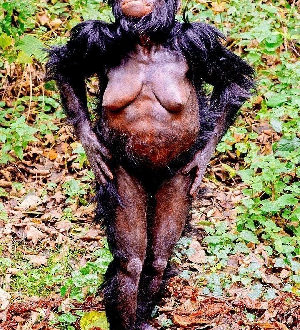The first species in the genus, A. anamensis, was found 4.2 million years ago in eastern Africa. For example, the Chadian A. bahrelghazali implies the genus became dramatically more significant than the fossil report indicated, and Australopithecus fossils found in eastern and southern Africa before the species became extinct 1.9 million years ago show that it was far more widespread than previously thought (or 1.2 to 0.6 million years in the past if Paranthropus is included). Homo genus descended from an Australopithecus species between 3 and 2 million years ago, but none of the other groups often included in this classification
In humans, SRGAP2B and SRGAP2C, two of the three SRGAP2 copies found in Australopithecus between 3.4 and 2.4 million years ago, were essential for neuron growth and migration. The fossil record of later A. afarensis suggests that significant alterations in hand size occurred roughly 3 million years ago (hands shortened relative to thumb and adjustments to the joints among the index finger and the trapezium and capitate).
Anatomy
The endocranial volume of the Australopithecus species was on average 466 cc, which is significantly smaller than that of modern humans (28. four cu in). While older australopiths (A. anamensis) appear to have been in the chimpanzee range, later australopith specimens show a bigger endocranial quantity than several early Homo fossils. Even if that’s bigger than a chimpanzee’s typical brain size of 360 ccs (22 cu in).
The typical height of an Australopithecus is 1.2–1.4 meters (threetoeseleven into four toes 7 in). Large size differences between sexes suggest that men were visibly more robust than females.
As a result of A. Zihlman’s claims that bonobos and Australopithecus share strikingly similar frame proportions, and evolutionary biologist Jeremy Griffith suggests that these two species may have shared some phenotypic traits.
If the fossil evidence is to be believed, Australopithecus lived before both Homo and modern humans. Finding Australopithecus, a small-brained ape who learned to walk upright through natural selection, disproved the idea that higher brain sizes influenced the evolution of bipedalism earlier in the history of humans.
There are five differences between modern human teeth and those of the Australopithecines, but the total number of 32 teeth is very close to what we have now. They have teeth that look like those of enormous apes, with parallel molars and closely spaced canines. Their canines were the same size as those of modern humans, and their enamel was not as closely spaced.
The word “excellence” comes to mind.
Most of their food came from plants, though they did eat insects, rodents, and other small animals.
 Home Of Ghana News Ghana News, Entertainment And More
Home Of Ghana News Ghana News, Entertainment And More





